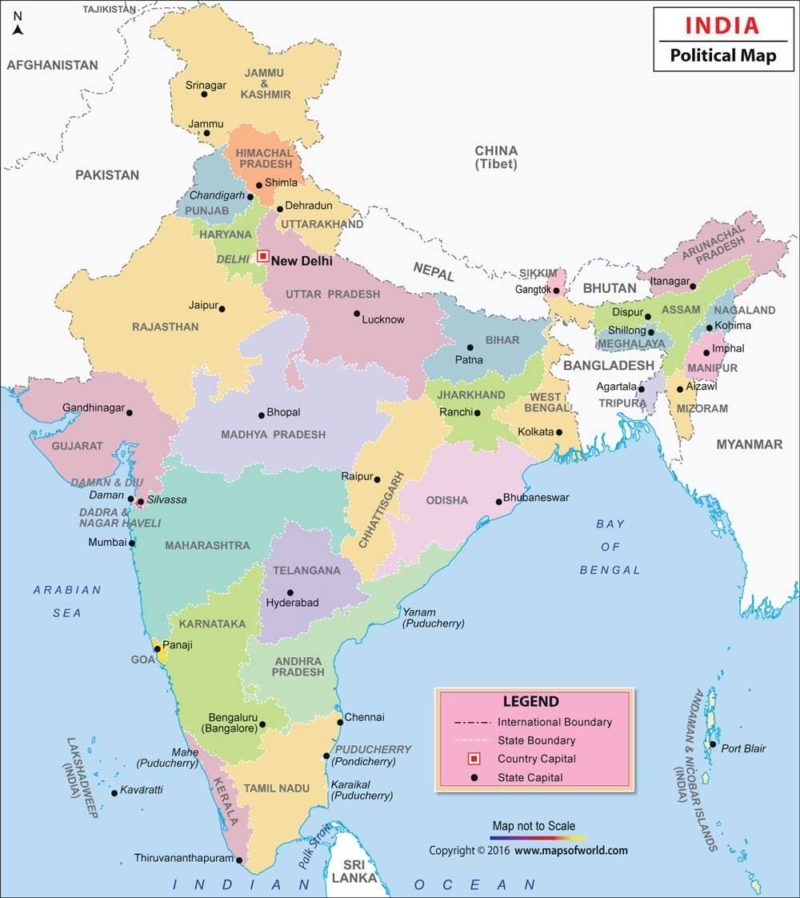In this article, Mustafa Rajkotwala makes a case against the proposal to create an All-India Judicial Services (AIJS). While tracking the current debate on the matter, he adds to the criticism that has been leveled against the AIJS. He identifies that not all is bad with all of subordinate judiciary: it is only in some States where judicial services are poorly and inefficiently managed. In his conclusion, he talks about how the issue of vacancies in the judiciary needs to be addressed at the State (provincial) level while promoting ideas of efficiency and transparency.
From the multiple Law Commission reports since the 1960s that introduced this idea, to the Prime Minister and the NITI Ayog in its recent Strategy for New India @ 75 emphasizing on its importance: the idea of an All-India Judicial Services (AIJS) that includes making appointments to the lower judiciary via the system of the Union Public Service Commission (UPSC) examinations in tandem with other civil services (viz. IAS, IPS, IRS, IFS), has continued to be an intriguing matter for legal commentators from all backgrounds across the country.
On the one hand, the proposal seeks to upheld notions of meritocracy and transparency in addition to the constitutional bolster in a service/cadre’s status provided by Article 312 that allows the formation of such a service. However, on the other hand, there has been some solemn criticism which suggests completely disregarding this idea. On multiple occasions, it has been labeled to be flawed and inefficacious in its entirety.
Hence, the pressing question that needs to be put to rest is whether there is an urgent need to revamp the entire judicial system with the AIJS or is it enough to make minor revisions in the status quo and pay attention towards the plethora of other existing problems in our legal system.
Understanding the concept and highlighting its positives
Delving deeper into the intricacies of how a system like the AIJS could sustain itself, we need to first understand why there is a recurring demand for the same in the first place, and how viable is it. According to Union Law Minister Shri Ravi Shankar Prasad, AIJS is the solution to the complications of vacancies in the lower judiciary, and a source of furthering the representation of marginalized communities around the nation in the judicial system. Furthermore, the execution of such an idea is on high priority following the formation of the government post the 2019 Lok Sabha elections. It will also perform the task of countering lack of transparency and efficiency in the contemporary High Court and State Public Service Commissions charged with selecting and recruiting judges for their respective states. Furthermore, the AIJS ensures equality and meritocracy to be its ideals and works towards restoring the faith of the common population in the nation-wide judicial procedures. Dating back to 1991, the Supreme Court in its judgment in All India Judges Association v. Union of India directed the Union Government to take immediate measures for the formation of the AIJS. There was no action taken in that direction, and till date, there has been a lack of implementation due to the massive roadblocks from the legal fraternity in the form of an undying debate. Furthermore, nine High Courts around the country openly rejected this proposal on various occasions. A major reason cited by the Press Trust of India includes the fact that the High Courts do not wish to lose administrative control over their operations, and therefore the status quo is wished to be maintained.
What do the critics have to say?
This brings us to the negative side of things: Why is there no requirement for overhauling the status quo? As we bring up the elements of centralization to counter the current recruitment procedures, we are relying on the assumption that our current lower judiciary bodies, state governments, and high courts are not performing well in appointing judges that are fit for our citizens. This often leads to the evil of vacancies– a baseless allegation in its entirety. According to latest recorded figures from Court News (an official publication brought out by the Supreme Court of India), States across the country are performing in a fairly decent manner – Maharashtra and West Bengal recorded a 2.8% and 7.8% vacancy rate out of the available 2,280 and 1,013 judicial posts respectively but on the other hand in states like Uttar Pradesh and Bihar the vacancies are at all-time highs with about 42% of the posts going unsanctioned. States such as Gujarat, Kerala, Chhattisgarh, Assam, and Rajasthan have been witnessing figures around 10% to 30% as their vacancy rates, while Chandigarh has 30 out of its 30 judicial positions filled up. Therefore, the inference that can be drawn safely is that the issue of vacancies is not spread equally across the nation. Therefore, it is just those particular states that require a reboot in their appointment procedures in comparison to a nation-wide ‘revolution’. On the other hand, if centralization of services is to be considered as a one-stop solution, then a reconsideration in that aspect is to be made as well, looking at the number of vacancies that are present in the various IAS, IPS and IRS cadres. Even the Indian Army and Navy’s recruitments are not void of this evil, with up to 9,000 plus positions going vacant on a yearly basis.
Secondly, the argument that women and less-represented caste groups shall reap enormous benefits out of this unified system is also logically flawed. There has been massive support towards this movement from these parts of the population on reformist grounds; however, one major element that fails to meet the eye is the actuality that a considerable amount of states already have existing provisions for the same and are promoting it actively. To name a few of these: Rajasthan, Kerala, Uttar Pradesh, Chhattisgarh, and Madhya Pradesh. Caste-based reservations are promoted for the direct qualifying examinations for district judges from the level of the bar. Furthermore, Chhattisgarh, Rajasthan, Uttar Pradesh, and Karnataka allow additional reservations for women, with the aim to make lower judicial positions equally accessible to them. This point is noteworthy due to the fact that it is only the individual state that goes out of its way for reservations for women, while the Centre does not look into this aspect at all. A point of furtherance on the SC/ST and OBC reservations include the aspect that they are supposed to be state-oriented as per the recent observations of the Apex Court. Therefore, if a person belonging to SC/ST groups wish to avail his/her reservations he/she can only be allowed to do the same within their State of residence. This completely contradicts the centralized reservation scheme proposed by the AIJS, as particular dominating SC/ST and OBC categories shall gain a higher pedestal in obtaining the reservation advantages, which they would otherwise be disqualified from because of the domicile requirements. In toto, there would be disharmony between the state-level governmental systems and the Centre if the AIJS were to be formed. Furthermore, since the AIJS proposes an all-inclusive one-time examination, fundamental questions of accessibility and privilege of certain groups in the society over the others attack the federal structure of our constitution at its edifice.
Articles 233 and 234 of the Indian Constitution permit the State Public Service Commission and High Courts to have complete authority over the recruitment, appointment, and removal of lower court judges. However, if Article 312 that provides for the formation of the AIJS receives a 2/3rd majority approval from the Rajya Sabha, it will leave the 29 States powerless, since their ratifications will consequently be of no use, in comparison to a traditional Article 368 amendment, which allows for the same. Therefore, in this case, it is wise that the states focus on their respective procedures and not fall into a trap that leads to further complications and tensions.
The way ahead
Instead of batting for a cause that will not solve any of the major hindrances being faced by the lower judiciary systems around the country, the States need to get their respective systemic issues cleaned up in order to provide for a transparent and accountable recruitment mechanism that they are vying for. This includes restructuring the delegated authorities that hold influence in the conduct of the lower judicial examinations and recruitments. There is no uniformity in the yearly (or even regular) conduct of the examinations, and even the procedure of the conduct of the same are not candidate-friendly at most times. Therefore, as per the Supreme Court, immediate consideration is required in the case of direct recruitments at the district level.
Apart from this, there is no predetermined scheduling done with respect to the dates of the annual examinations, and the grievance redressal methods are not provided for the candidates, making the entire process arbitrary to start with. The candidates have to resort to High Court petitions for their paper re-evaluations which is another waste of resources for the State and the candidates. In such a predicament, the required course of action is to resolve these issues at once. The States should make their lower judiciary systems more robust and efficient for functioning. Therefore, the compelling need of the hour is not that of the AIJS, but of various states and high courts to perform their existing roles in such a manner that the citizens’ and aspiring judges’ faith in the lower judiciary can be automatically restored.
Mustafa Rajkotwala is an Year II B.A.,LL.B. (Hons.) Candidate at NALSAR, Hyderabad with a keen interest towards litigation and judicial process. He is a Writing Fellow for Nyaya.







Leave A Comment